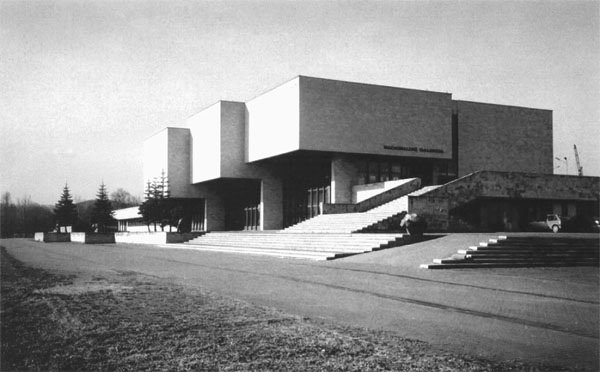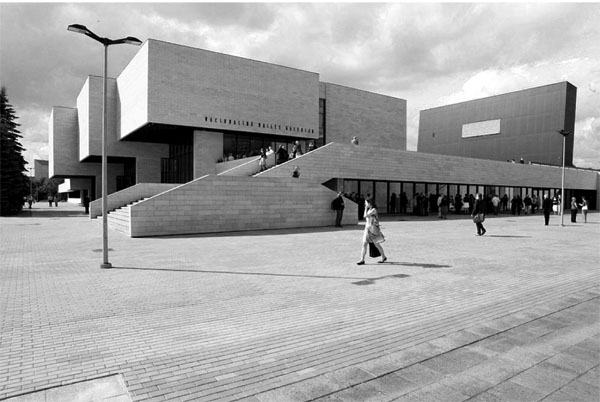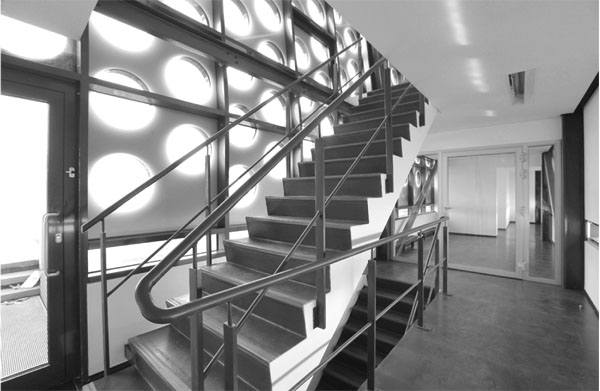
Copyright © 2012 LITUANUS Foundation, Inc.
Volume 58, No.3 - Fall 2012
Editor of this issue: Elizabeth Novickas
 LITHUANIAN
QUARTERLY JOURNAL OF ARTS AND SCIENCES
|
ISSN
0024-5089
Copyright © 2012 LITUANUS Foundation, Inc. |
|
Volume 58, No.3 - Fall 2012 Editor of this issue: Elizabeth Novickas |
The Lithuanian National Gallery of Art
ERNESTAS PARULSKIS
ERNESTAS PARULSKIS is an art critic, museum curator, writer, and blogger based in London and Vilnius.
The Newest State-Sponsored Institution of Lithuanian Art Traces its Beginnings to the Museum of the Revolution
The main features of the building housing the Lithuanian National Gallery of Art (LNGA) in Vilnius were originally designed in 1968 for the Museum of the Revolution. The building had been designed by two recent graduates of the State Art Institute in Vilnius, Gediminas Baravykas and Vytautas Vielis, who had won the design competition. Construction started in 1971 and was completed in 1980. The initial architectural idea changed slightly during the decade of design and construction, but the building retained two main characteristics of the Lithuanian architectural style of the 1970s: the use of simple and clearly defined forms, and the careful placement of the structure in the natural environment. The architects gracefully pitched massive rectangular stone volumes on transparent glass walls and beautifully integrated the museum into the right bank of the Neris River.
The Museum of the Revolution’s existence was brief. In 1991, its exhibits were placed in storage at the Lithuanian National Museum, and ownership of the building was transferred to the Lithuanian Art Museum. Since 1993, the Lithuanian National Museum used the building to exhibit shows of Lithuanian folk art and a collection of art donated by the Lithuanian-American sculptor Vytautas Kašuba (1915-1997). These and some other temporary art exhibitions continued through 1999, when the building was closed due to its poor physical condition.
In 2002, the Government of the Republic of Lithuania approved a project to establish the National Gallery of Art in the building of the former Museum of the Revolution. A year later, an architectural competition for reconstruction and expansion of the building was announced. Eight Lithuanian architects participated in the competition. The winning proposal, by Audrius Bučas, Darius Čaplinskas, and Gintaras Kuginis, retained the original structure of the building, but added new space and new materials. The new ensemble synthesizes the modernist architecture of the sixties with new technological advancements of the twenty-first century.
New structural elements, such as the new exhibit hall and wings reminiscent of an advertising screen, integrate the building into the rapidly changing urban environment on Konstitucija Avenue, representing a modern, dynamic, knowledge-based society and culture. The LNGA opened its doors to the public in 2009.
The gallery contains ten rooms for permanent display and two for temporary exhibitions. The total exposition area is over 35,000 square feet. The permanent display presents approximately 450 works by major Lithuanian artists. These are paintings, sculptures, prints, and photographs encompassing the period from the beginning of the twentieth century to the present day. The exhibition is structured by combining chronological and thematic approaches. On the one hand, the permanent display presents a narrative of historical development, which can be analyzed by reflecting on the different aspects of the exposition, along with special temporary exhibits. On the other hand, each exhibit highlights its specific relationship with place and time. The gallery bases each visual narrative on a specific “core problem,” which is often based on the politics of the time. The viewers are encouraged to look at art through a political prism. Explanatory texts describe the artists on different ideological sides and the means they had used to achieve their artistic goals.
The temporary exhibit rooms of the LNGA are equipped with the latest equipment and are used for complex exhibitions involving large-scale mixed media projects. For its 2009 debut, the LNGA presented one of the biggest projects under the Vilnius: European Capital of Culture 2009 banner, an international exhibition named Dialogues of Color and Sound: M. K. Čiurlionis and His Contemporaries. Each year, the LNGA mounts several temporary exhibits of Lithuanian and international art, which are often accompanied by film screenings, lectures, and educational weekends.

The Lithuanian National Gallery of Art building
before reconstruction, around 1999

Structure after restoration
Photo by Vaidotas Aukštaitis

The interior of the screen-like structure.
Photo by Raimondas Urbanavičius